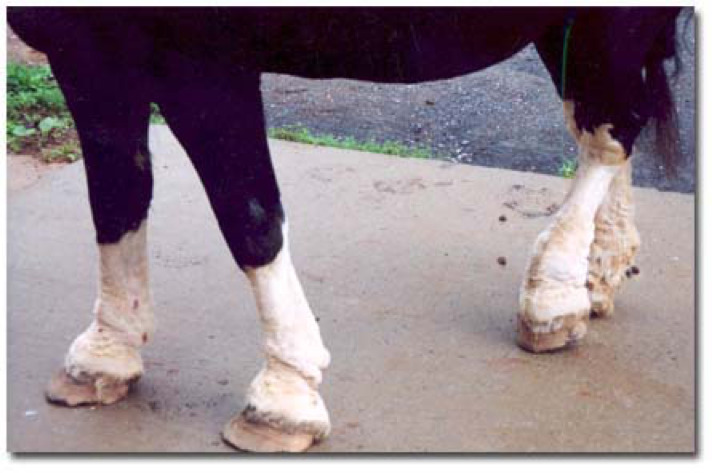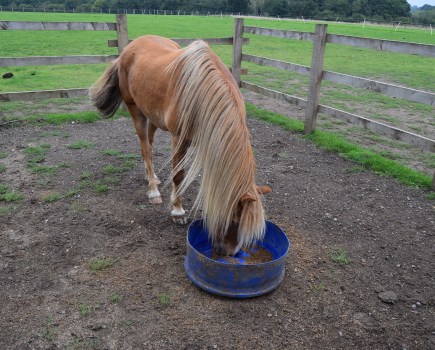We have a new team of vet bloggers joining us here at Your Horse! First up is Steph Cook MRCVS from Scott Mitchell and Associates, Hexham, members of XLVets Equine. Here she explains what happened when she went out to see a rather unusual skin condition.
As I looked through my diary there were the usual vaccines, dentals, lameness checks and a dectomax injection.
Dectomax is used commonly to treat feather mites. Feather mites are a problem often seen in the breeds with more feathers (as the name suggests), and is caused by the Chorioptic mite. They’re smaller than lice and not visible to the naked eye.
Feather mites cause irritation and itching in horses. Those affected can often be seen rubbing their back leg with the other hoof, or bending around and giving their back legs a good nibble with their teeth.
To treat feather mites, two injections can be given 10-14 days apart either into the muscle or under the skin, to kill the parasite.
Clinical exam and assessment
As soon as I arrived on the yard, I could see that my patient, an eight-year-old Clydesdale gelding called Charlie, had a lot more going on than just some mites.
His lower hind legs were swollen and thickened, so much so that there were rolls of skin folds, and he had rubbed some of the hair off.
There were also areas that were oozing fluid and parts that had spots of blood.
Draught types such as Shires and Clydesdales can get a condition called chronic progressive lymphoedema. The lymphatic system is a one-way system that carried cells and fluid back to the blood system.
It’s responsible for the immune system, and is made up of small branches (like blood vessels) that go into the tissues of the body. When this lymph fluid becomes trapped, it causes swelling.
It’s seen more often in these breeds because there’s a genetic component to this disease that means the elastin (one of the substances that make up the walls in the lymph vessels) is abnormal, preventing it from pumping properly.
This reduced movement of lymph leads to decreased perfusion, compromising the immune system and leading to secondary infections, either bacterial or with mites.
The discharge on Charlie’s skin indicated he had a secondary bacterial infection, so I gave him an antibacterial shampoo to eliminate the infection, along with a one-off injection of a steroid into the vein, to reduce some of the inflammation and break some of the itch and scratch cycle.
I also gave him a dectomax injection to reduce the mite infestation.
Further treatment
I left Charlie’s owner with her homework to do and decided to reassess him in a week or two.
The treatment got rid of any of the bacterial and parasitic component of the disease, while careful management would reduce the progression of the disease and reduce the lymphedema (the swelling caused by the reduced lymph flow).
In horses with this condition, management includes clipping feathers. Clipped feathers make any lesions easier to see and allow for more effective topical treatment. It also reduces the risk of recurrences of mites.
Along with clipping and daily leg massages, one of the other main aspects of Charlie’s management is exercise, as this is needed to enhance the lymph flow. As Charlie walks, he’ll push the lymph up to his body and away from the bottom of his legs.
He’s now no longer stabled and turned out to keep his limbs moving. This also helps with his hygiene, as he won’t always lie down in the same place. Compression bandages were applied when he needed to be stabled.
His next check up
When I next saw Charlie, he was happy and out in the field, with his legs less swollen.
His owner reported that she’d seen him rubbing his hind legs together less often, indicating he has less discomfort from mites.
She’d been washing his legs with the shampoo every few days, so now the discharge had all gone from his legs. When I examined Charlie, he was less tender to the touch and I also gave him his second dectomax injection.
I look forward to seeing Charlie on the occasions when I’m on his yard, and keeping an eye on how his legs are doing. Now that his owners know what the condition is, they’re aware how to manage it best.









